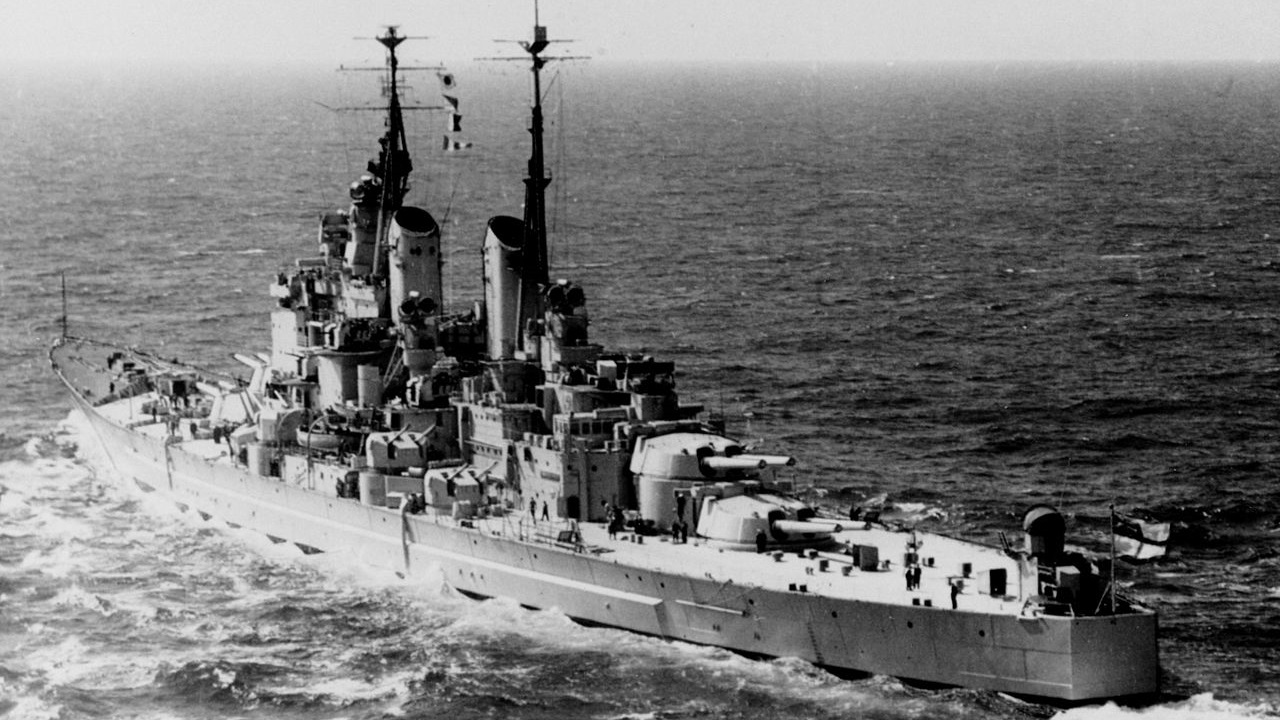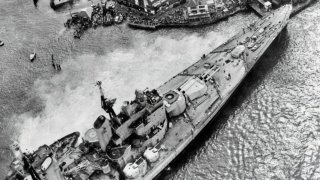Vanguard-Class: 52,000 Tons of Raw Power and Battleship Failure
Commissioned in 1946, the British Royal Navy's Vanguard-class battleship was a marvel of engineering, boasting a displacement of 52,000 tons and armed with 97 guns, including four twin 15-inch main guns, cruising comfortably at 30 knots. However, its arrival post-World War II rendered its capabilities irrelevant against the backdrop of a diminished British Empire and a changed global power structure.
Summary: Commissioned in 1946, the British Royal Navy's Vanguard-class battleship was a marvel of engineering, boasting a displacement of 52,000 tons and armed with 97 guns, including four twin 15-inch main guns, cruising comfortably at 30 knots. However, its arrival post-World War II rendered its capabilities irrelevant against the backdrop of a diminished British Empire and a changed global power structure. Originally designed to counter German and Japanese naval threats, the Vanguard faced a world where aircraft carriers had become the dominant naval force. Despite its advanced design, the battleship's strategic utility was overshadowed by the changing nature of naval warfare and geopolitical realities.
The Vanguard-Class Battleship: A Colossus of the Seas in a Changed World
By the time the British Royal Navy’s Vanguard-class battleship hit the High Seas, she was obsolete. That’s an astounding statement, considering how advanced the battleship was when she was commissioned. Displacing an astounding 52,000 tons, this behemoth was armed with 97 guns, four of which were potent twin 15-inch main guns.
The Vanguard-class was also fast for a ship of her size and displacement. This tub could cruise comfortably at 30 knots (around 35 miles per hour). For comparison, the USS Gerald R. Ford, which is both the most advanced aircraft carrier ever built and the fastest has a cruising speed equivalent to the Vanguard-class.
The Vanguard-class was designed during the Second World War. There was no real reason at the time of her designing to believe that by 1946, the years she put to sea, Hitler would be dead, Japan would be irradiated, and the war would have been over for a year.
But that was the reality the Vanguard-class faced.
This battleship had incorporated countermeasures against perceived German kriegsmarine and Imperial Japanese Navy (IJN) advantages that other British warships did not have. Of course, once she left drydock, those enemies were vanquished and a new threat—and geopolitical reality for Britain—existed.
Mismatched Capabilities
In 1946, the British Royal Navy was a shadow of its former self. The British Empire was collapsing, too. With the war over, the kinds of missions that the Vanguard-class was designed for were no more. What’s more, the Soviet Union was the new threat, and the United States was the new dominant power in the world.
Britain’s economy was eviscerated. Her colonies were leaving the Empire in droves. No matter how advanced or impressive the Vanguard-class battleship’s systems were when she launched—and they were impressive—they were also irrelevant to the strategic needs of Britain’s navy.
The reason that the Vanguard-class had been delayed until 1946 was due to defense industrial shortages that had occurred during the Second World War in Britain.
Plus, Royal Navy planners kept modifying her design. That fact, coupled with the weakened state of Britain’s wartime industrial base, led to massive delays in the deployment of this warship. This all sounds familiar to anyone paying attention to the state of the current empire running the world, the United States.
Battleships were considered the topline capital ships of their day.

Yet, by the 1940s, as WWII was truly underway, it was the aircraft carrier that was the most important surface warship of its era. After the war, the Americans would make the flat top the centerpiece of its naval power projection capabilities. The British, however, could not make the transition. The back of their empire was broken. Britain’s industrial base was struggling.
And the strategists in London still clung to what by then were outdated notions of what sea power looked like. Plus, so much time, limited resources, and money had been invested in the Vanguard-class battleship that this warship was going to be launched, and used, no matter what.
Sunk Cost Fallacy
This sunk cost fallacy is the very same notion that consumes most US Navy planners as well as their funders in Congress when it comes to the aircraft carrier. Just as back in the 1940s with the battleship, the modern aircraft carrier is simply not viable as the primary power projection platform for the Navy.
Yet, both the US Navy as well as the Royal Navy are obsessed with building these expensive targets for Chinese, Russia, Iranian, North Korea, and possibly soon Venezuelan anti-access/area denial (A2/AD) systems.
Just as with the British, the United States can ill-afford to misuse its limited resources or to waste precious tax dollars and time making sclerotic defense industries build systems that may be destroyed by the opening salvos in any major war.
The British did not learn this lesson in a timely manner.
Thus, while the Vanguard battleship served in the Royal Navy from 1946-1960, she was not worth the money that had been splurged on her construction. At that point, modern warfare and the realities of the geopolitical situation in the mid-twentieth century simply did not make sense for Britain to maintain this system.
One can only hope that the Americans do not make similar mistakes as it relates to aircraft carriers. Though, it seems increasingly like this will happen.
About the Author
Brandon J. Weichert, a National Interest national security analyst, is a former Congressional staffer and geopolitical analyst who is a contributor at The Washington Times, the Asia Times, and The-Pipeline. He is the author of Winning Space: How America Remains a Superpower, Biohacked: China’s Race to Control Life, and The Shadow War: Iran’s Quest for Supremacy. His next book, A Disaster of Our Own Making: How the West Lost Ukraine, is due October 22 from Encounter Books. Weichert can be followed via Twitter @WeTheBrandon.


